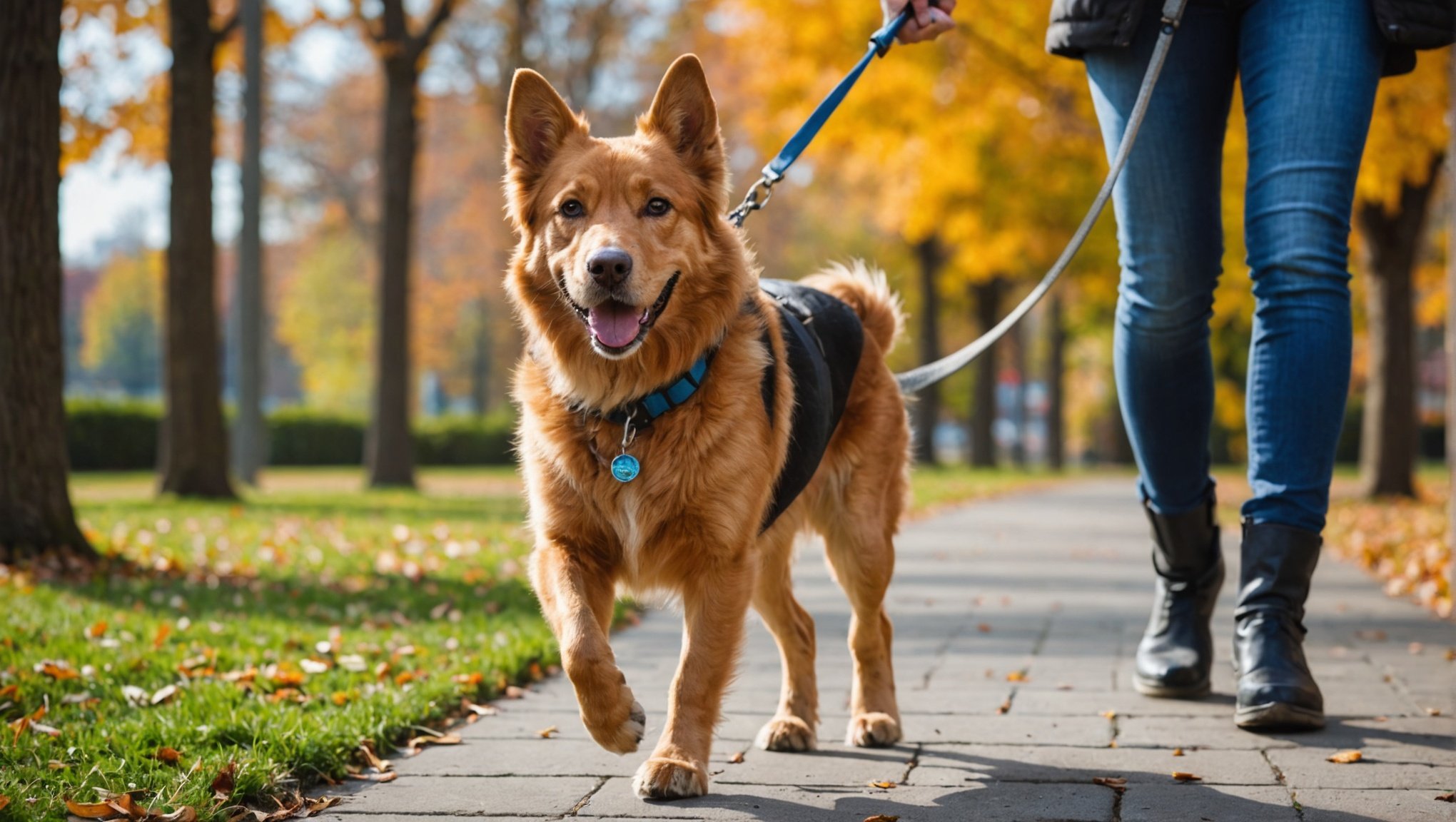Mastering Loose Leash Walking: Top Strategies for Training Your Dog
Understanding the Importance of Loose Leash Walking
Loose leash walking is a crucial aspect of dog training that can significantly enhance the quality of your walks with your pet. It’s not just about avoiding the frustrating experience of your dog pulling on the leash; it’s also about ensuring your dog’s safety and your own comfort. Here’s why it’s so important:
- Safety: A dog that pulls on the leash can easily get into dangerous situations, such as running into traffic or getting tangled in obstacles.
- Comfort: Walking a dog that constantly pulls can be tiring and uncomfortable for you, making what should be an enjoyable experience into a chore.
- Behavior: Teaching your dog to walk on a loose leash helps in developing good behavior and reinforcing your role as the leader during walks.
Preparing for Loose Leash Training
Before you start training your dog, it’s essential to prepare both yourself and your pet for the process.
In the same genre : The Ultimate Guide to Choosing the Best Bedding for Horses with Sensitive Skin
Choosing the Right Equipment
The right equipment can make a significant difference in your training sessions. Here are some key items to consider:
- Harness: Instead of using a collar, a harness is often recommended for loose leash walking. It distributes the force more evenly across your dog’s chest and shoulders, making it more comfortable and reducing the risk of neck strain[2].
- Leash: Opt for a leash that is comfortable for you to hold and not too long, as this can give your dog too much freedom to pull.
- Treats: Positive reinforcement is a cornerstone of successful dog training. Choose small, tasty treats that your dog loves.
Setting the Right Environment
The environment where you train your dog can greatly impact the success of your sessions.
Have you seen this : Ultimate Guide to Successfully Socializing Your Puppy with Other Pets: Expert Tips and Best Practices
- Start Indoors: Begin your training in a calm, familiar environment like your home or garden. This reduces distractions and helps your dog focus on you[2].
- Gradually Increase Distractions: As your dog becomes more comfortable with the training, gradually introduce more distractions such as other people, dogs, and noises.
Step-by-Step Guide to Loose Leash Walking
Training your dog to walk on a loose leash involves several steps, each designed to build on the previous one.
Step 1: Introducing the Concept of Walking
- Begin Without a Leash: Start in a quiet area without a leash. Hold a treat close to your dog’s nose and say “walk” or “heel” while gently guiding them to follow your hand beside you.
- Use Positive Reinforcement: Reward your dog with the treat and praise them when they walk beside you. Repeat this process several times to create a positive association with the command[2].
Step 2: Building Duration
- Increase Distance: Gradually increase the distance you walk with your dog. Start with short distances (3-5 yards) and gradually extend the time.
- Adjust Session Length: Be mindful of your dog’s attention span. If they show signs of boredom, adjust the session length accordingly[2].
Step 3: Introducing the Leash
- Use a Leash: Once your dog understands the concept of walking beside you, introduce a collar and leash. Continue using treats and the “walk” or “heel” command while maintaining the leash connection.
- Ensure Comfort: For small puppies, ensure the collar and leash are lightweight to avoid discomfort or strain[2].
Step 4: Fading the Treats
- Reduce Treat Frequency: Start reducing the frequency of treats during the walking exercise. Begin by offering treats intermittently, then gradually transition to rewarding only at the end of the walk.
- Transition to Verbal Praise: As your dog becomes more reliable, transition from treats to verbal praise and affection as rewards[2].
Step 5: Adding Distractions and Varying Environments
- Introduce Distractions: Gradually introduce distractions such as other dogs, people, and noises. Practice walking in different environments to generalize the behavior.
- Keep Sessions Engaging: Continue using the “walk” or “heel” command and keep the sessions engaging and stimulating. Avoid pushing your dog beyond their limits and provide breaks to prevent boredom and frustration[2].
Using Positive Reinforcement Effectively
Positive reinforcement is the key to successful loose leash walking training.
Why Positive Reinforcement Works
- Encourages Good Behavior: By rewarding your dog for walking beside you, you communicate the desired behavior and encourage them to repeat it.
- Builds Trust: Positive reinforcement helps build trust between you and your dog, making the training process more enjoyable and effective.
Tips for Effective Positive Reinforcement
- Use High-Value Treats: Choose treats that your dog loves and finds highly rewarding.
- Be Consistent: Use consistent commands and rewards to avoid confusion.
- Keep Sessions Short: Aim for frequent short training sessions throughout the day, lasting anywhere from 30 seconds to 2 minutes[2].
Distinguishing Between Heel and Loose Leash Walking
It’s important to understand the difference between heel training and loose leash walking to use the right approach in different situations.
Heel Training
- Structured Walking: Heel training requires your dog to stay close by your side, often with their head aligned with your thigh. This is particularly useful in busy environments or when you need more control[2].
- Use Clear Commands: Use the command “heel” or “walk” to signal that your dog should stay close to you.
Loose Leash Walking
- Greater Freedom: Loose leash walking allows your dog greater freedom to explore while still maintaining a connection with you. This is suitable for relaxed walks in parks or quiet areas.
- Use Transition Commands: To give your dog more freedom, use commands like “OK, go free,” “Social time,” or “Go sniff” to signal the transition from heel to loose leash walking[2].
Table: Comparing Heel and Loose Leash Walking
| Aspect | Heel Training | Loose Leash Walking |
|---|---|---|
| Purpose | Structured walking, close control | Relaxed walking, greater freedom |
| Environment | Busy areas, need for control | Quiet areas, parks |
| Commands | “Heel,” “walk” | “OK, go free,” “Social time,” “Go sniff” |
| Dog’s Position | Head aligned with your thigh | Some distance from you, but still connected |
| Use of Treats | Frequent use in initial stages | Gradual reduction as training progresses |
| Level of Distraction | Low to moderate | Moderate to high |
Practical Insights and Actionable Advice
Here are some practical tips and advice to help you in your loose leash walking training:
Be Patient and Consistent
- “Training a dog to walk on a loose leash takes time and patience. It’s important to be consistent with your commands and rewards to avoid confusing your dog,” advises a professional dog trainer.
Use the Right Equipment
- “A harness can make a big difference in loose leash walking. It’s more comfortable for your dog and helps in reducing pulling,” says a dog owner who has successfully trained their pet.
Practice Regularly
- “Regular practice is key. Even short sessions each day can make a significant difference in your dog’s behavior over time,” recommends a dog training expert.
Example Scenario: Overcoming Common Challenges
Imagine you’re walking your dog in a park and they suddenly see another dog, causing them to pull on the leash. Here’s how you can handle this situation:
- Stay Calm: Avoid pulling back on the leash as this can create a tug-of-war situation. Instead, stay calm and speak in a soothing voice.
- Use Commands: Use the “heel” or “walk” command to remind your dog to stay by your side.
- Offer Treats: If necessary, offer a treat to refocus your dog’s attention on you.
- Practice in Similar Situations: Gradually introduce similar distractions during your training sessions to help your dog learn to handle them better.
Mastering loose leash walking is a journey that requires patience, consistency, and the right strategies. By understanding the importance of loose leash walking, preparing the right environment and equipment, and following a step-by-step training guide, you can help your dog develop good walking behavior. Remember to use positive reinforcement effectively, distinguish between heel and loose leash walking, and practice regularly to achieve the best results.
In the words of a seasoned dog trainer, “The key to successful loose leash walking is not just about the techniques you use, but also about the bond you build with your dog. With patience, consistency, and positive reinforcement, you can enjoy stress-free and enjoyable walks with your pet.”











